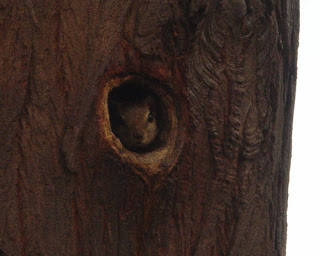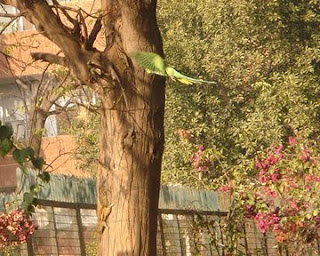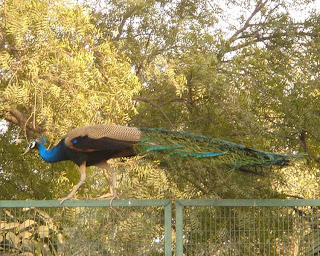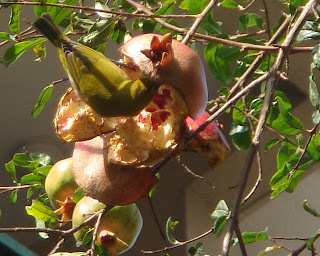Posted by
Kirigalpoththa
on
June 22, 2010
Kirigalpoththa- A walk through a magical island
Kirigalpoththa is the second highest mountain in Sri Lanka. It is one of the best hiking routes in the island.
This blog updates on exciting places for hiking and camping in the country and also tries to share information on some of the best routes and beautiful locations in Sri Lanka.
URL - http://kirigalpoththa.blogspot.com/
|
Posted by
nikhil
on
June 17, 2010
Hi friends,
I am Nikhil Rathod from Nagpur.
I visited Pench National (Known as Karmazari in MP ) Park with friends on 8th and 9th June 2010
and the experience was fantastic. Mother nature in summer is at full swing and the park
looks beautiful in summer. And the animals too. We saw many animals and both days tigers, cubs
jackal, hyena and many more.
Nikheel Rathod.
mob:- 9370275277
|
Posted by
Susan Sharma
on
June 08, 2010
IndianWildlifeClub.com has entered a competition hosted by
Artemisia and
Ashoka's Changemakers for "Leveraging Business for Social Change" and we'd love to get your feedback.
Ask us a question or post a story about how our portal has impacted you and we'll respond directly on the site.
http://www.changemakers.com/en-us/node/75297
Please go through the above entry tracing the evolution of our club. Look forward to your feedback
Dr.Susan Sharma
|
Posted by
Rakesh
on
June 03, 2010

Indian Peacock (called Mayura in Sanskrit) has enjoyed a fabled place in India since ancient times. In imagery Lord Krishna is always represented wearing a peacock feather tucked in his headband.
Ancient kings in India were said to have gardens to raise peafowl where guests were invited to see the peacock dance during the mating season. Due to this close relationship with humans for thousands of years, they have entered ancient Indian stories, songs
and poems as symbols of beauty and poise. As the mating season coincides with the onset of monsoon rains and the month of Shravan in the Hindu calendar, many songs of rains have peacock-dance mentioned in them. One possible origins of the name of the famous
Maurya dynasty of ancient India is probably derived from the word Mayura as the ancestors of the Mauryas are thought to be peafowl-keepers of a royal court in eastern India.
Hindu mythology describes the peafowl as the vehicle or vaahan for Karthikeya, also called Murugan, the brother of Ganesha, the goddess Saraswati, and the goddess Mahamayuri.
watch the video of courtship displaying dance of Indian peafowl at my you tube link
http://www.youtube.com/watch?v=W-wqHP-CrWU
"http://flickriver.com/photos/desert_bikaner/"><img src="http://flickriver.com/badge/user/all/recent/shuffle/medium-horiz/ffffff/333333/34273112@N03.jpg" border="0" alt="desert_photographer - View my recent photos on Flickriver" title="desert_photographer -
View my recent photos on Flickriver"/
Indian Peafowl displaying his train during the peafowl breeding season. Indeed, its sole purpose is to attract a mate. Seeing a peahen approaching, the peacock lifts his train—a cluster of long tail coverts that spread out to form a fan several feet high and
extending down to the ground on both sides. The train feathers are iridescent blue and green, with an eye-like spot of brilliant blue, green, and orange, at the end. Each feather is a work of art in itself—together they make a spectacular backdrop for the
sapphire blue peacock and his carefully orchestrated courtship dance: 1. During the breeding season, peacocks choose special places to perform their courtship dance and they tend to return to the same location year after year.
|
Posted by
sushil kumar
on
May 31, 2010
this is sushil from chandigarh, i have made a shrort wildlife film on ghariyal i want to screening it in film fest through iwc.
|
Posted by
Susan Sharma
on
March 07, 2010

Sinking Island-Majuli
Majuli in upper Assam is the largest river island on the Brahmaputra River . It is a pollution free fresh water island. Total area of the island was 1250 sq.km., now it is about 650 sq.km, having lost significantly to erosion. Only 26 percent of total land
area of Majuli is suitable for cultivation.
In the 16th century a sage called Shankardev founded a new sect of Vaishnavism here, which has flourished healthily in the last five hundred years. Today, the ‘sattras’ play a major role in the religious and social lives of every inhabitant of Majuli. Every
family sends one son to be a monk, usually from the age of six; the belief is that if one son becomes a monk, then the whole family will be blessed by God. With pilgrims flocking here every year in numbers matched only by the migratory birds for which the
island is also a haven, Majuli is known in some circles as the ‘Vatican of Vaishnavism’.
Performed by the monks of the Bhogpur Sattra at the Birla Mandir, New Delhi on 20th February, 2010, the dance clip below, has no song or words but strangely resonates with the uncertain future of this island.
The island today is separated from the mainland of Assam by 2.5 KM. Apart from the ferry connecting Majuli to mainland, an “e-Sethu” or e-governance project of Government of India connects the village to Assam. A wetland, Majuli is a hotspot for flora
and fauna, harbouring many rare and endangered avifauna species including migratory birds that arrive in the winter season. Among the birds seen here are: the Greater Adjutant Stork, Pelican and Whistling Teal. The island is almost pollution - free owing
to the lack of polluting industries and factories and also the chronic rainfall.
A UNDP study reports that the island is under threat due to the extensive soil erosion of its banks. The reason for this magnitude in erosion is the large embankments built in neighbouring towns upriver to prevent erosion there during the monsoon season
when the river distends its banks. The upshot is a backlash of the tempestuous Brahmaputra’s fury on the islet, eroding most of the area. According to reports, in 1853, the total area of Majuli was 1,150 km² and about 33% of this landmass has been eroded in
the latter half of 20th century. Since 1991, over 35 villages have been washed away. Surveys show that in 15–20 years from now, Majuli may cease to exist.
Here is another evocative clip, a dance by Sattriya Dancers of Kalabhumi- one of complete surrender to fate?
|
Posted by
Susan Sharma
on
February 26, 2010

 We, barbets are great at home building. Apart from finding something to eat, pecking a hole on the tree keeps us occupied for the best part of our life. (After all we are related to the famous woodpeckers!)
We, barbets are great at home building. Apart from finding something to eat, pecking a hole on the tree keeps us occupied for the best part of our life. (After all we are related to the famous woodpeckers!)
 When this neat hole on a wild neem tree was complete, we had reason to be proud of our handy work. We managed raising two broods inside during the summer months and our chicks are now grown up and flying about on their own. During winter, we normally fly away
to warmer climes, what are wings for anyway. It seemed appropriate to rent out our premises to other needy folks. But look at what the ants have made of it. They are really dirty housekeepers.
When this neat hole on a wild neem tree was complete, we had reason to be proud of our handy work. We managed raising two broods inside during the summer months and our chicks are now grown up and flying about on their own. During winter, we normally fly away
to warmer climes, what are wings for anyway. It seemed appropriate to rent out our premises to other needy folks. But look at what the ants have made of it. They are really dirty housekeepers.
 When the squirrels came and cleaned up the mess, we were happy. The squirrel kids were snug and warm for the winter. Not one but two families lived inside.
When the squirrels came and cleaned up the mess, we were happy. The squirrel kids were snug and warm for the winter. Not one but two families lived inside.

 The parakeets need a spacious bungalow and are now checking out the squirrel home. We barbets are sitting on the fence and watching the fight between the parakeet and the squirrel.
The parakeets need a spacious bungalow and are now checking out the squirrel home. We barbets are sitting on the fence and watching the fight between the parakeet and the squirrel.

 Hey, but why is the tree looking shrivelled up? The squirrels have been extending the house illegally from inside, eating away the sap inside.
Hey, but why is the tree looking shrivelled up? The squirrels have been extending the house illegally from inside, eating away the sap inside.
 Looking at the withering tree, we know that it will not be able to weather the next winter storm. May be it is time for us to move on to another tree! (The more you observe nature, the more you tend to identify your emotions and feelings with it. That is the
reason why I have included this blog under"anthropomorphism")
Looking at the withering tree, we know that it will not be able to weather the next winter storm. May be it is time for us to move on to another tree! (The more you observe nature, the more you tend to identify your emotions and feelings with it. That is the
reason why I have included this blog under"anthropomorphism")
|
Posted by
Susan Sharma
on
February 14, 2010
 At last the cold winter of 2010 is on its way out and spring is here again. The redstart which heralded winter for us, is all set to disappear to higher plains till the weather beckons again.
At last the cold winter of 2010 is on its way out and spring is here again. The redstart which heralded winter for us, is all set to disappear to higher plains till the weather beckons again.
 The nasturium flower smiling at the sun gives itself completely to the grass blue butterfly.
The nasturium flower smiling at the sun gives itself completely to the grass blue butterfly.

 A peacock balances itself on the wall as the clouds proclaim a mild shower coming.
A peacock balances itself on the wall as the clouds proclaim a mild shower coming.
|
Posted by
Susan Sharma
on
December 28, 2009
 The Anaar tree which bears the Anaar (Pomegranate) fruit is valued in Ayurvedic and Unani systems of medicine. The fruit and its rind have nutritious values and healing properties. The pomegranate is native to the region of Persia and the Himalayan ranges
of India. It grows well in the NCR region.
The Anaar tree which bears the Anaar (Pomegranate) fruit is valued in Ayurvedic and Unani systems of medicine. The fruit and its rind have nutritious values and healing properties. The pomegranate is native to the region of Persia and the Himalayan ranges
of India. It grows well in the NCR region.
 The bird community seems to realize the value of the pomegranate fruit. Of all the plants and bushes in my garden, the Anaar attracts quite a few birds at all times. The soft spoken "white eyes" and the chirpy "bulbuls" relish the red fleshy seeds.
The bird community seems to realize the value of the pomegranate fruit. Of all the plants and bushes in my garden, the Anaar attracts quite a few birds at all times. The soft spoken "white eyes" and the chirpy "bulbuls" relish the red fleshy seeds.

 The squirrel, evening brown butterfly and common Castor butterfly are the other regulars I have observed at various times.
The squirrel, evening brown butterfly and common Castor butterfly are the other regulars I have observed at various times.



|
Posted by
Susan Sharma
on
December 28, 2009
 This winter we have not had many butterflies in the garden; may be because it has been a dry winter with no signs of rains coming. So I was thrilled when the blue pansy flitted about under the morning sun. First on the yellow chrysanthemums and then on the
Asoka Tree.
This winter we have not had many butterflies in the garden; may be because it has been a dry winter with no signs of rains coming. So I was thrilled when the blue pansy flitted about under the morning sun. First on the yellow chrysanthemums and then on the
Asoka Tree.


|